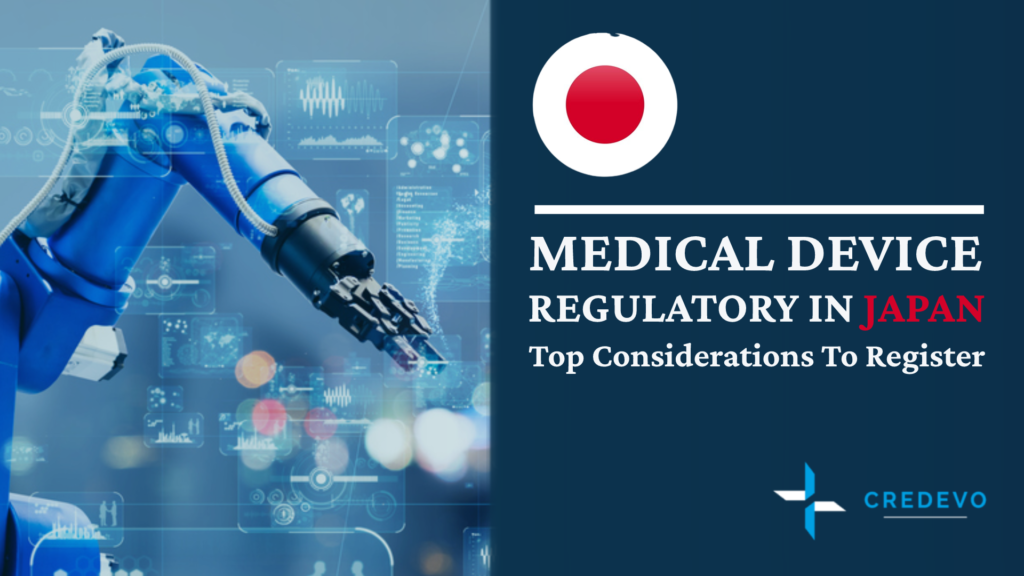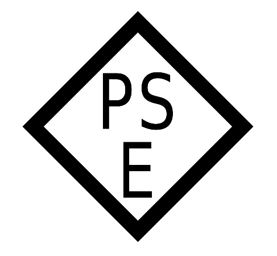Top 6 Considerations For Registering Your Medical device In Japan

Medical device regulations vary from country to country, and this is not different in Japan. To register your medical device in Japan, you need to look for these top 6 considerations to make your registration process easy.

Japan is a global economic powerhouse with one of the largest medical device markets. In terms of US dollars, the Japanese medical device market had a 2016 value of $28.1 billion, and by 2022, analysts expect it to have surpassed US $41.7 billion.
The domestic industrial market in Japan is thriving. Many notable Japanese producers are well-known in countries other than Japan. However, most medical devices used in the Japanese healthcare system are purchased abroad. Foreign businesses still have a chance in the medical device industry despite the reputation of Japan as a center of technological innovation.
Over 25% of the population of Japan is over the age of 65, making it a country with a very aging demographic. So it is a profitable market for foreign companies, particularly those selling goods to deal with aging and lifestyle issues. There is a high demand for interventional cardiology equipment such as pacemakers, orthopedic implants, home care, preventative care, and cutting-edge technologies.
Do you have questions like where & how to register your medical device, click here to understand in detail
Here are the top 6 considerations for registering your medical device in Japan
Consideration #1: If you are a foreign manufacturer, you need a MAH or DMAH
Expansion of MAH is Marketing Authorization Holder, and DMAH is the Designated Marketing Authorization Holder.
- MAH and DMAH are two words that the Ministry of Health, Labor, and Welfare of Japan (MHLW) has defined.
- The entity known as MAH, with a Japanese address, is the owner of the marketing authorization license.
- A foreign producer who obtains marketing authorization for their goods but lacks a local presence in Japan may decide to use a DMAH. A MAH who is in charge of overseeing quality control in Japan is known as a DMAH.
- When a medical product is approved and promoted in Japan, the MAH/DMAH acts as the representative of the product.
The specific responsibilities of MAH and MAH-D include
- Controlling and supervising the producer
- Upkeep product approvals and administration of the product registration process
- Ensuring that all manufacturing facilities adhere to Quality Management System (QMS) regulations of Japan while managing product quality and safety
- Governing product storage in a business that has a MAH license
- Managing the distribution of a product to distributors or other sales groups.
- Post-market surveillance management
- Registration of manufacturing facilities by domestic and international manufacturers
The PMD Act established a new registration process for manufacturers. According to the registration system, domestic manufacturers must get Manufacturer Registration from their local prefectural government and register their manufacturing facilities (MR).
On the other hand, foreign businesses must register with the PMDA and obtain a Foreign Manufacturer Registration (FMR) certificate for their manufacturing facilities. Before applying for the registration of a medical device, we should appoint the MR and FMR.
Consideration #2: Foreign manufacturer registration (FMR)
If you want to advertise your device in Japan, FMR is something you should take into account. The Pharmaceutical and Medical Device Agency of Japan conducts an audit as part of the FMR procedure. They conduct audits primarily through documentary inspections, despite the on-site inspections.
Manufacturing facilities are analyzed to confirm that the foreign manufacturer is qualified to participate in the product registration.
Applicants must submit personnel information for the manufacturing facilities to obtain FMR approval. The Marketing Authorization Holder (MAH) of the specific manufacturer receives the registration certificate from PMDA after the MHLW approves the FMR registration.
- Design facility: This is the location of the product’s design and development records, and it is here that the person in charge of the manufacturing operations should work.
- Main assembly plant: The establishment that carries out assembly (filling) procedures; it is primarily accountable for ensuring that the Quality Management System (QMS) is followed or for the actualization of the product.
- A sterilizer: Do the sterilization process for medical device products.
- A domestic distribution center in Japan is the facility that keeps the goods and coordinates their final release to the Japanese market.
Consideration #3: Your medical device must have special markings
The CE mark is a sign of compliance with EU health, safety, and environmental protection requirements on many products sold on the single market in the European Economic Area (EEA). When utilized, it is essential that the initials “CE” be printed in their familiar, conventional format and meet the guidelines.
The letters CE must be proportionate to the size of the regular version if you increase or decrease the size of your mark. Unless the applicable directive specifies a larger minimum dimension, the CE marking is at least 5 millimetres in size.
The CE label is permanently in place, clearly legible, and visible.
T Mark
According to the Japanese telecommunications business law, a device that uses an ethernet terminal connection must pass the telecommunications carrier’s connectivity test and show compliance with standards to use terminal equipment over a telecommunications carrier network. Your device will have a T-Mark and be able to connect to networks when you get T-Mark approval.
R Mark
The R mark is the 3 THz radio band law that governs all items in Japan. The R marking applies to non-radio communication devices like discharge lamps and induction heaters.

Label for high-frequency devices
The approval required for wireless radio and telecommunication equipment in Japan is the Telecommunication and Radio Certification for Japan. All goods that use the radio spectrum and operate below 3 THz should follow the Japanese Radio and Telecommunication Law. Additionally, it covers items like high-frequency medical devices that are not communication devices (ultrasound machines).
The Ministry of Internal Affairs and Communication (MIC) is the competent authority for this certification. The Telecommunication and Radio Certification for Japan is also known as the Japanese Radio Law, Japanese Telecommunication Business Law, TELEC Certification, and MIC Certification. High-Frequency devices must undergo compliance testing before being registered with the MIC via a Self-Declaration method.
The PSE mark
Japan’s Pharmaceutical Affairs Law generally regulates medical equipment (PAL). Depending on the potential risk of the medical equipment, different certification procedures are available under PAL. Several medical devices are also subject to DENAN regulations (PSE Mark).
Examples of applicable devices
- Electric vaporizers
- Electrical masseuses
- Simulators for finger pressure (Shiatsu)
- Hair removers with high frequencies
- Home electric devices that may be medicinal
- Personal heating devices for medical purposes
- Devices for therapeutic lighting in homes
- Personal ultrasonic devices
- Magnetic medical equipment
- Personal short-wave therapeutic equipment
- An electric reclining beds
- Personal low-frequency medical devices
- Additional home appliances powered by electric motors or magnets for
- Domestic use of therapeutic
- Manufacturers of medical supplies

Consideration #4: Prior PMDA consultation
The Pre-Submission consultation is the main feature created to give manufacturers PMDA feedback on Pre-Market Approval (PMA), notification of clinical study plan, and others. The PMDA offers several types of opportunities for regulatory consultation and advice for manufacturers.
Similar to the PreSubmission provided by the US FDA’s Q-Sub program, the PMDA’s PreSub program allows different types of consultation depending on the manufacturer’s objectives.
The application also enables one to speak with PMDA specialists about the regulatory procedure and requirements. Outside the PreSub consultation program, the PMDA offers the chance to ask straightforward questions about laws and regulatory practices. These options don’t produce formal meeting minutes.
It is not mandatory to have pre-consultation with the PMDA.
However, early engagement with PMDA on anticipated non-clinical and clinical studies and careful consideration of PMDA’s feedback may improve the quality of ensuing submissions, including PMA applications and notifications of clinical study plans, and reduce the total amount of time needed to review ensuing submissions.
The PMDA thinks that the interactions made possible by the Pre-Sub consultations will probably make the review process more transparent for both the manufacturer and the PMDA.
The MHLW introduced new registration procedures for particular medical devices, such as fast-track reviews, conditional fast-track reviews, and IDATEN reviews, with the modification of the PMD Act, which went into effect in September 2020. Before submitting, the medical devices covered by one of the new registration paths must request a Pre-Sub consultation.
Consideration #5: Japan’s import regulations for medical devices
A new importation system went into effect in 2016 to replace the Japanese Import Notification procedures, which were previously in place for foreign medical devices and medications registered for sale in the country.
Medical device makers’ Marketing Authorization Holders (MAH) or Designated Marketing Authorization Holders (D-MAH) would need to provide copies of their MAH licenses to customs officers for clearance, according to an announcement by Japan’s Ministry of Health, Labour, and Welfare (MHLW).
You should provide the following copies to the customs officer:
Premarket certificates, premarket approval, and premarket filings for devices that have already registered for sale in Japan.
The Pharmaceuticals and Medical Devices Agency (PMDA) or a Registered Certification Body (RCB) that examines unregistered devices may stamp copies of premarket approval, certification, or submission forms with receipts for MAHs and D-MAHs.
Foreign medical device companies who sell their products in Japan should confirm that their D-MAH partners are aware of the changes to import notification.
Consideration #6: Medical device labelling in Japan
- The Pharmaceuticals and Medical Devices Agency (PMDA) specifies the guidelines for medical device labeling in Japan in Article 52 of the Act on Securing Quality, Efficacy, and Safety of Products, Including Pharmaceuticals and Medical Devices.
- In Japan, packaging inserts, or “tempu bunsho,” list local labeling.
- The package inserts should include the details in Japanese Instructions for Use (IFU).
- As a condition of the Clearance Release Judgement, packaging inserts must attach by the Market Authorization Holder (MAH) or Manufacturer of Pharmaceuticals.
- Packaging inserts may be attached at the factory of manufacture or by the manufacturer’s warehouse in Japan.
- Notification is necessary before a medical device or IVD device is marketed in Japan or when the package insert is changed.
Do You Have More Questions Regarding Registering Your Medical Device In Japan?
Do you require any further questions? or are you looking for support in registering your medical device in Japan? Please enter the details of your requirement below to connect with us to explore our services.